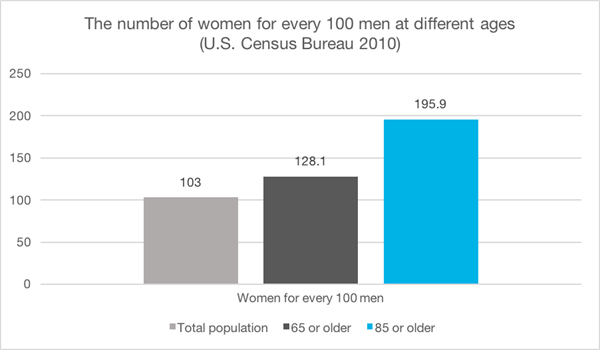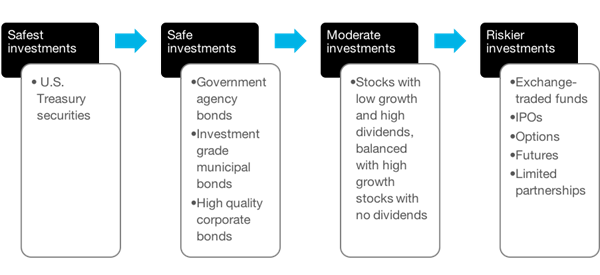by
User Not Found
| Feb 14, 2017
Women control approximately $14 trillion in the United States today, or 51 percent of private wealth – and over the next forty years, 70 percent of wealth transferred will go to women. Furthermore, 95 percent of women will be the primary financial decision maker for their family at some point in their life. Clearly, it’s critically important for women to be financially savvy and to raise financially fit children, too. Following are tips on budgeting, investing and wealth protection for women.
“I love data. I think it's very important to get it right, and I think it's good to question it.”
Mary Meeker, venture capitalist and partner, Kleiner Perkins Caufield & Byers
Start with a budget
Financial planning begins with getting a handle on your budget, collecting all relevant financial information, cataloging your assets and understanding where and how you spend. Set savings goals and stick to them; our annual financial checklist can help. It’s important to know your sources of income now versus later, like employment, a pension, Social Security or an IRA. Consider that women live, on average, five years longer than men and are more likely to be widowed. And according to the latest census data, women outnumbered men nearly 2-to-1 by the time they were age 85 – a fact women should take into consideration when planning for future income.

Make your cash reserve a priority
Because cash reserves are usually allocated for emergencies or unexpected costs, quick access to your reserve and liquidity is key. The unexpected need for cash can arise after a major medical event or major life change like divorce. Hold cash reserves in bank accounts or stable investment accounts that allow you to withdraw money at any time without being penalized, such as checking or savings accounts, money-market accounts or short-term Treasury bills. We recommend keeping an equivalent of three to six months living expenses in your reserve.
“My grandmother Izzy taught me to balance her checkbook when I was 6 years old. She would sign the checks after I paid the bills. I had a chuckle with my grandmother recently on how 'unbalanced' her checkbook must have been years ago.”
Mary Callahan Erdoes, CEO, J.P. Morgan Asset Management
Go to school on your investments
Just like you need to balance your budget, getting a handle on financial planning involves balancing your portfolio and considering its risk relative to the potential reward. By diversifying across the spectrum from the safest investments to those that are more volatile (see chart below), you can reduce risk in your portfolio without giving up an equivalent level of potential return. Accordingly, you should evaluate your overall financial goals, investment timeframe and tolerance for investing in high-risk securities then begin to allocate your assets. As you work through this process, your primary goal should be to maximize the potential return while staying within the bounds of your risk tolerance. Most people will end up with a broad mix of investments that span the entire spectrum in the chart below. People with a higher risk tolerance can accept greater volatility in their portfolio and will generally have a higher weighting to the riskier investments. The opposite will be true for those with a lower risk tolerance.

In terms of balancing your portfolio, you must pay attention to an asset’s potential for growth and dividends (regular payments by a company to its shareholders from its profits or cash reserves) as changes in interest rates and the rate of growth in the economy will have a differing impact on these return drivers. We typically recommend clients balance stocks with low growth and high dividends alongside stocks with high growth and no dividends to maximize the potential for gain while lowering the level of risk.
The last eight years have been characterized by exceptionally low interest rates and an extended period of rising equity markets. In this environment, it is critical to make sure your portfolio is not stuck in a concentrated position, potentially catching you off guard when rates rise or the economy makes an unexpected shift. Click the following links to read more about balancing your portfolio and the risks of a concentrated equity position.
Since interest rates have been low, it’s a good time to consider what will happen to your portfolio when they rise. Some industries benefit from rate hikes, like banks and insurance so we believe it is good time to invest in those sectors. In contrast, income-oriented investments generally fall in value, as interest rates rise, to bring their yields up to those offered by the rest of the market.
It is also important to pay attention to the structure of investments and not just their inherent volatility. For example, individual bonds remain attractive in this environment in spite of the fact that there is potential for an increase in interest rates. Individual bonds have a set term to maturity. As time passes the market value converges towards the stated maturity value regardless of the direction of interest rates. In a rising rate environment, an upward movement in rates will push the current market value of the bond down, but that will be offset with the passage of time as the bond approaches maturity. In contrast, a bond fund never matures. Therefore, as interest rates rise the value of the bond fund declines and there is no offsetting benefit from the underlying bonds moving closer to their maturity value.
“I demand pretty aggressive goal setting and a commitment to measured progress towards those goals because I don't like surprises. I don't even like good surprises.”
Abigail Johnson, President and CEO, Fidelity Investments
Protect your wealth
There are several things women can do to ensure their financial futures. First, it’s important to save early and aggressively for retirement. Remember that women live longer than men on average, so they’ll need retirement savings for a longer amount of time. Couple that with the fact that women make 79 cents for every dollar men earn on average and that women are more likely to leave the workforce to care for a child or aging parent. For these reasons, women should not delay saving for retirement – it could mean losing out on the compounding effects of investing early.
Protecting wealth also means protecting your estate. Begin by calculating your net worth and determining ownership of assets. Then, decide upon your beneficiary; review your will and trust, power of attorney and health care directive; make a list of assets, instructions and passwords; and determine the amount of potential estate tax you’ll be required to pay. In many states, like Washington, there is both federal and state estate tax to contend with. The sooner you plan, and the clearer you are with your intentions, the less likely there will be issues or disagreements amongst family members down the road.
Another area where women can avoid pitfalls is making sure to keep tabs on their insurance plans. Often, people have too little, or too much insurance – or just “get it and forget it” without regularly evaluating plans to see if they’re offering the lowest cost coverage that suits their needs. It’s also very important to understand the limits of the plan’s coverage to avoid surprises later. Finally, failing to factor life insurance proceeds into your estate plan could have an impact on beneficiaries down the line.
“As a mother, it would be tempting — or at least would create fewer debates in the home — to say ‘yes’ to every risky thing my kids propose [but]…it’s a balancing act, as we measure each ‘proposal,’ we gather information, predict potential outcomes, weigh the consequences and make a decision to take the risk, or not. The same concept applies in business…a women’s tendency to measure risk, to examine the possibilities, and to take the time to calculate potential costs and benefits before taking the big plunge of committing shareholder capital, should be something to be celebrated and replicated.”
Adena Friedman, President, Nasdaq
As women increasingly become the primary financial decision maker for their households, gaining a working knowledge around the basic concepts of budgeting, investments and wealth preservation will go a long way in paving the way toward strong financial futures for their families. Need help? Contact us today.
